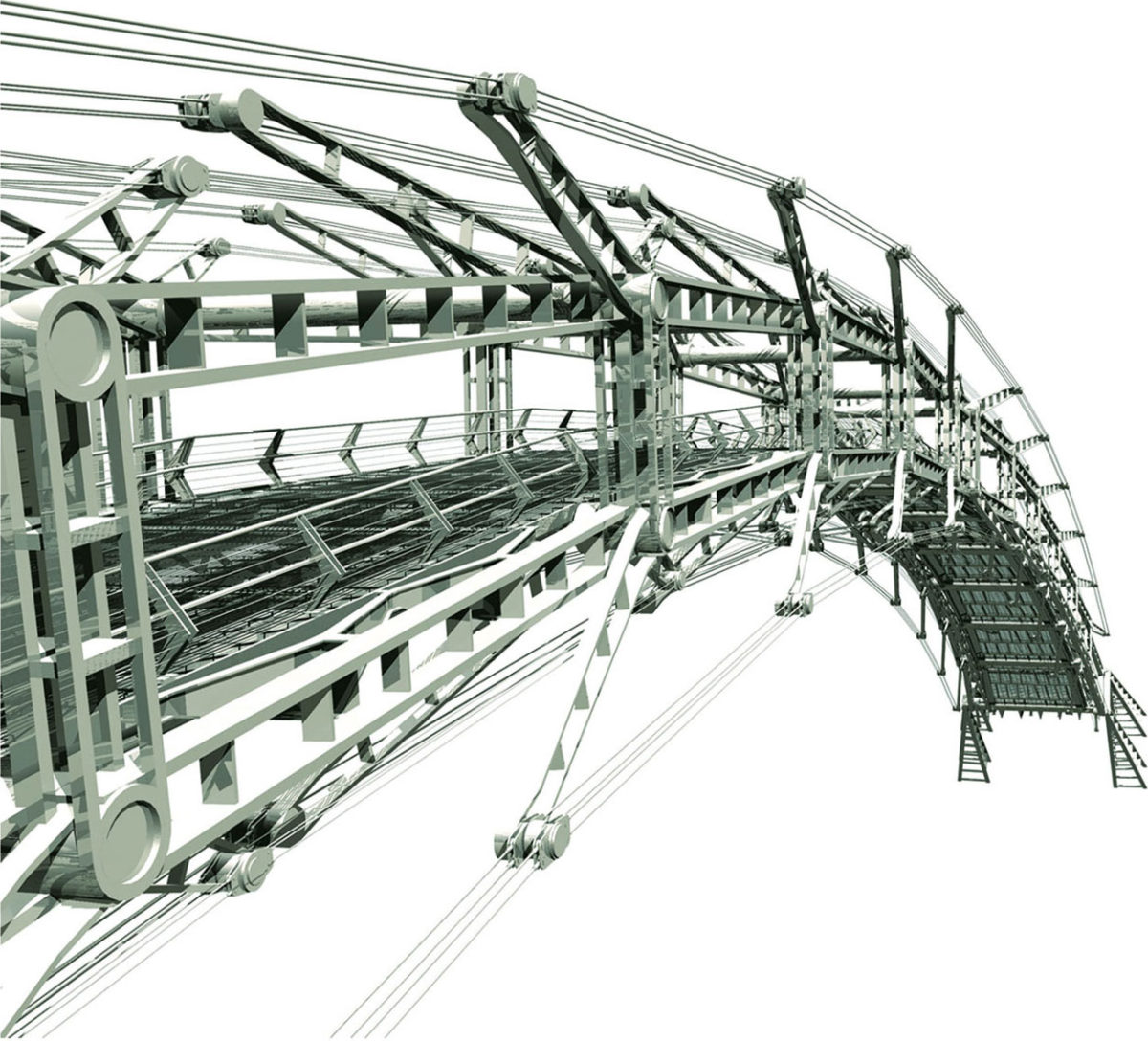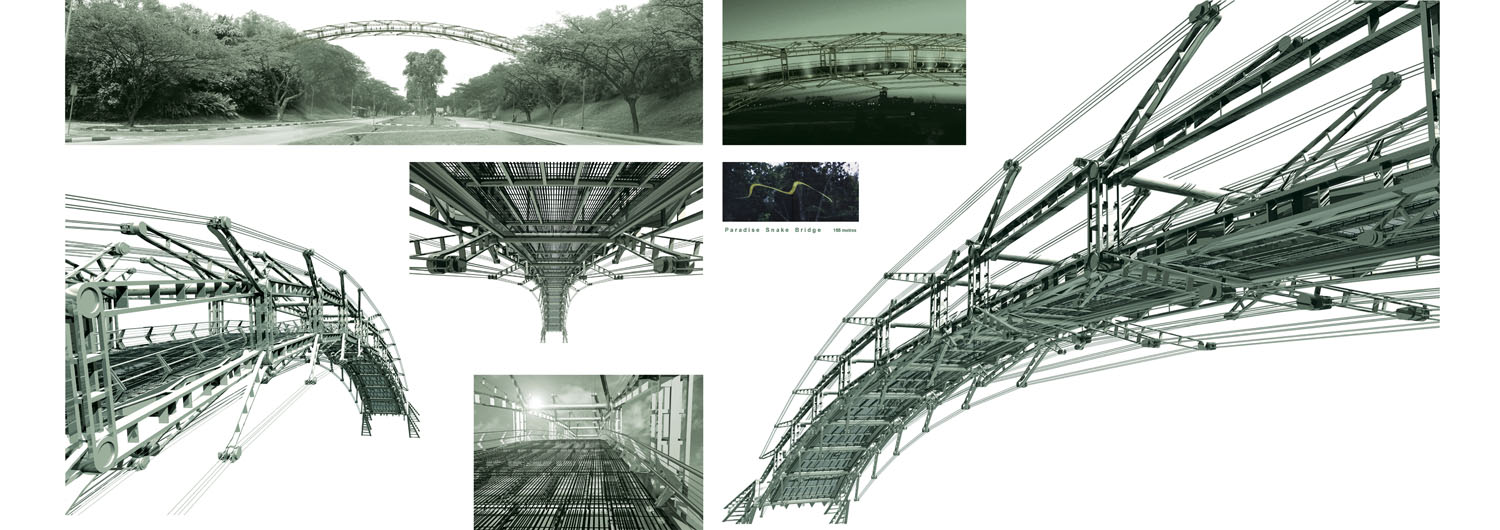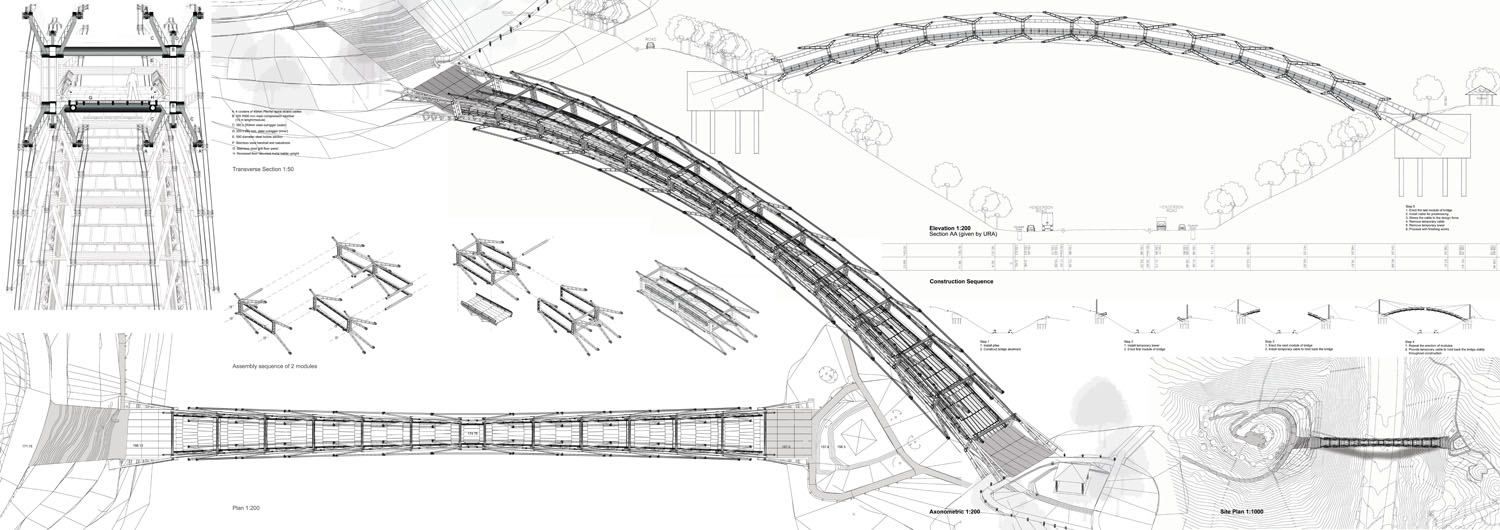In the wooded settings of Mount Faber and Telok Blangah Hill, a simple elevated crossing is conceived with a structure of extremely slender proportions in relation to its span. To achieve this slenderness with minimal mass, Tim Laman’s description of the gliding Tree Snake is inspiration for the architecture of the bridge:
“The Paradise Tree Snake moved along the tree branch in the dappled light of the rainforest. Suddenly it dropped over the edge, just holding on by its tail, and then pushed off into the damp air. It changed shape as it began to drop, ribs spreading and body flattening as it swam through the air. These gliding animals propel themselves through the air by shifting body weight subtly or adjust tails and limbs to steer a controlled flight path through the canopy labyrinth. Only slowly, slowly, did the timeless forest reveal its secrets.”
The structural concept is a series of repetitive elements strung together like the vertebrate sections of the snake and stressed into an efficient structural form. The bridge is made up of 4 main chords acting in compression with pre-tensioned tendons that run parallel to the bridge from the exterior. The bridge is modelled as an arch, a higher rise would improve the efficiency of the arch. However, due to practicality issues, the rise of which will be limited. Tendons are hence introduced to increase the bending capacity of the arch. These tendons are connected to the main chords by outriggers, which in turn increase the compressive forces in the main chords. The structural system would behave as both a beam and an arch. The tendons hold the modules together to form the main arch bridge through the outriggers and increase the overall stiffness of the section in bending, and hence improve the buckling stability of the system, and performance under uneven loading cases. In essence, the chord section is designed to take the compressive forces in the chords while the tendons serve to stiffen the system in bending. This increased bending capacity makes up for the axial capacity lost due to the low rise in the arch. The outriggers serve to transfer the tension in the tendons to the main arch as compression.
One of the basic precepts behind the design of the bridge is to achieve repetition in structural elements. The modules are designed to be the same structural module repeating itself for the length of the bridge. This will achieve efficiencies in fabrication, which will translate to reduced costs. The repetitive form of the modules will also add to the visual interest in the bridge making the architecture coherent and continuous throughout.


